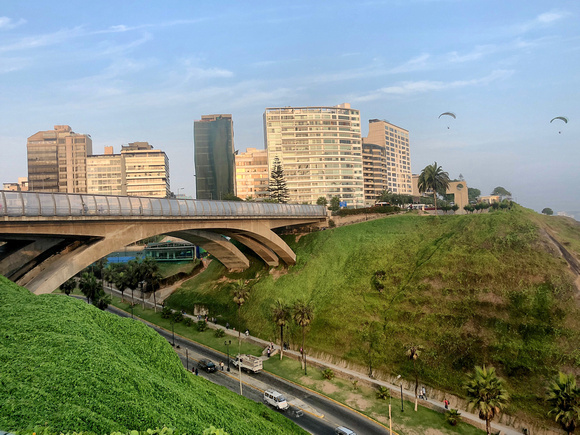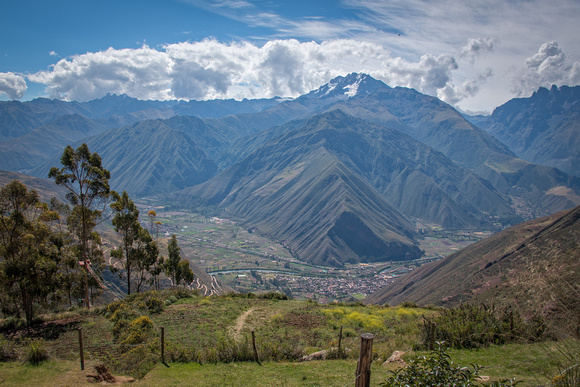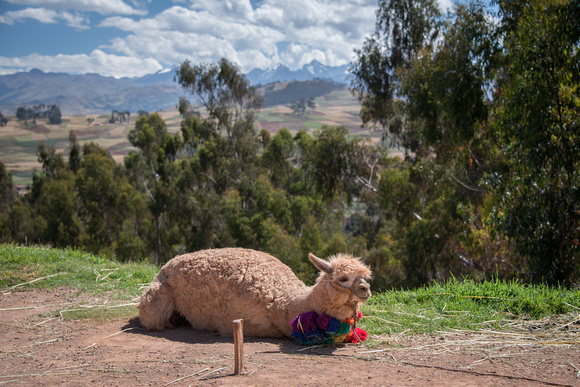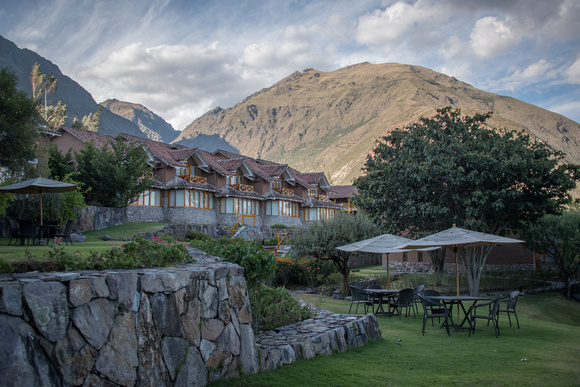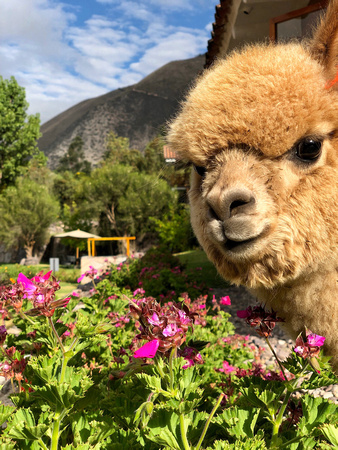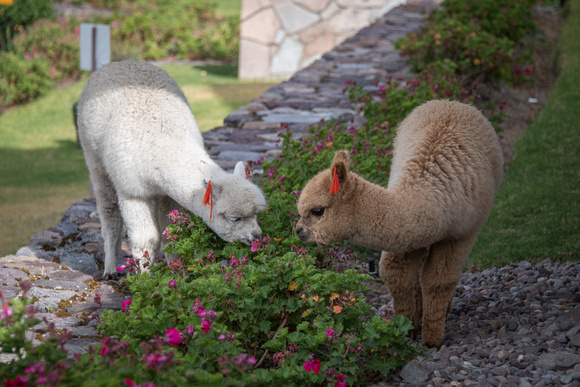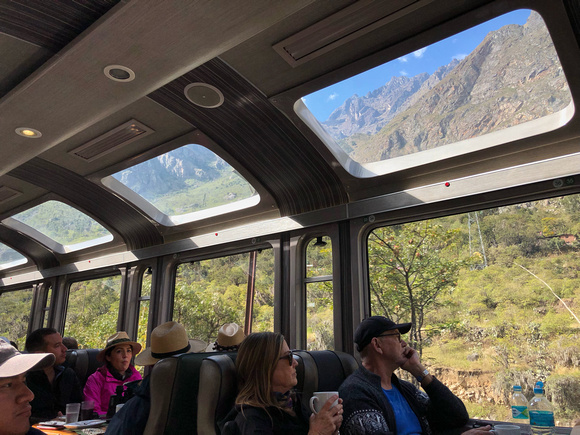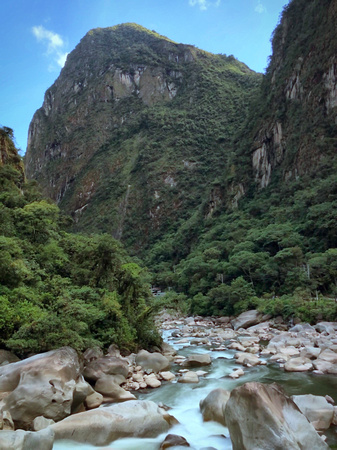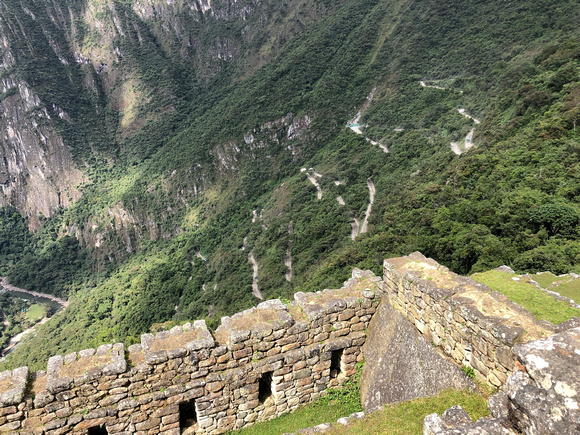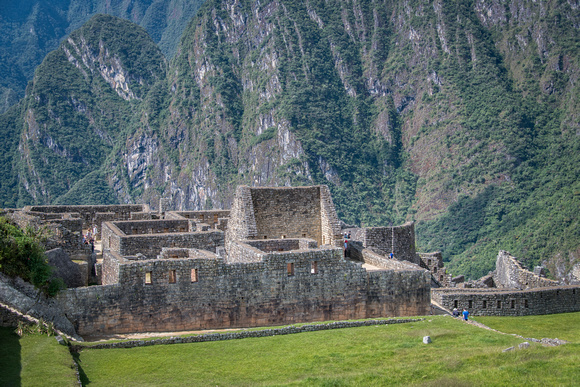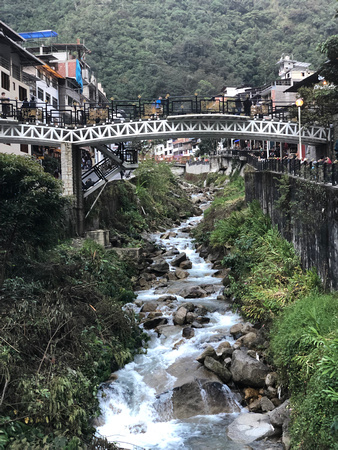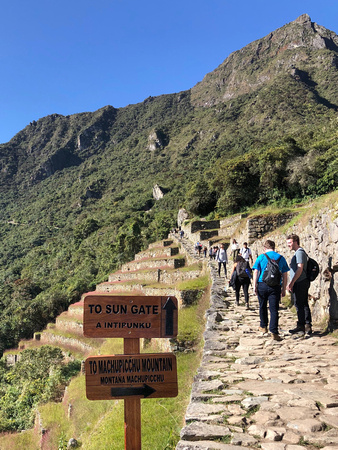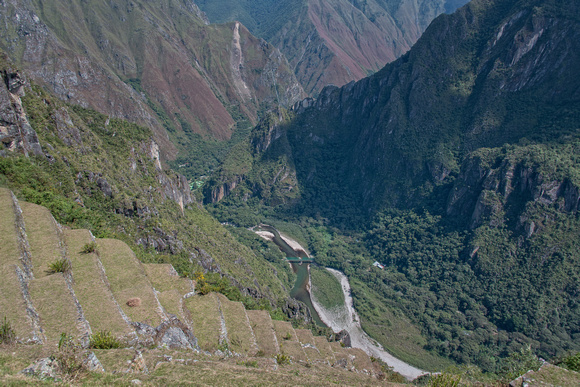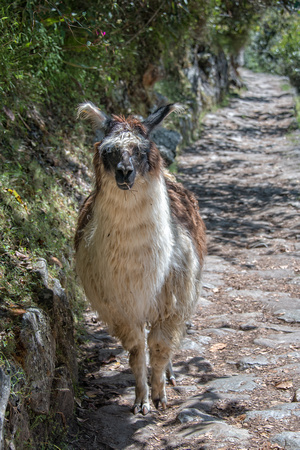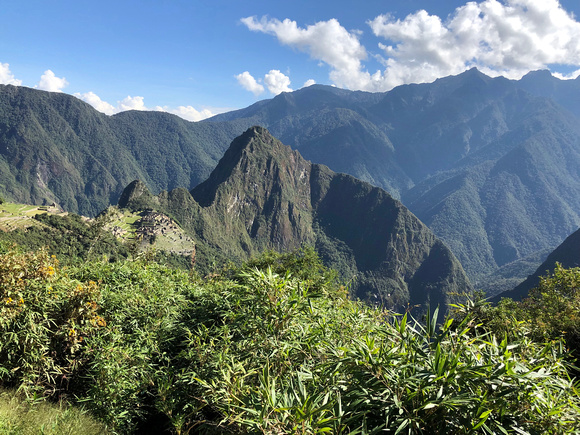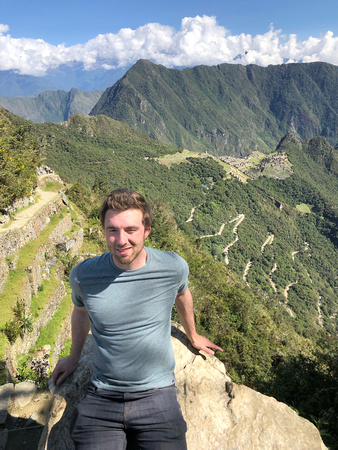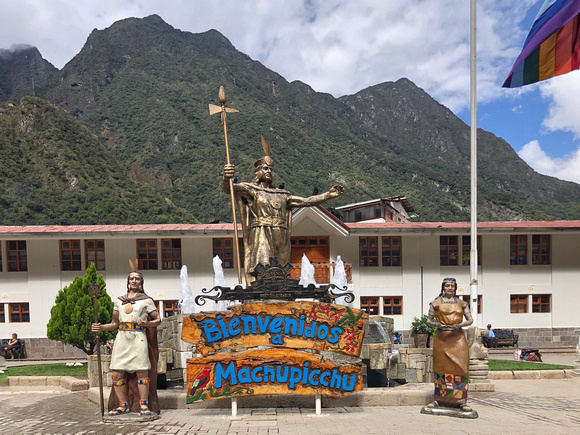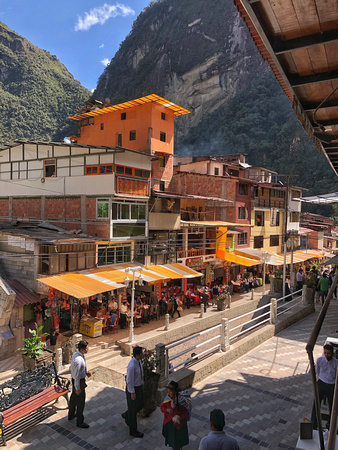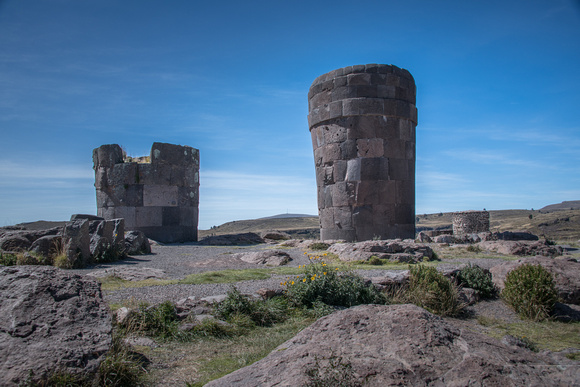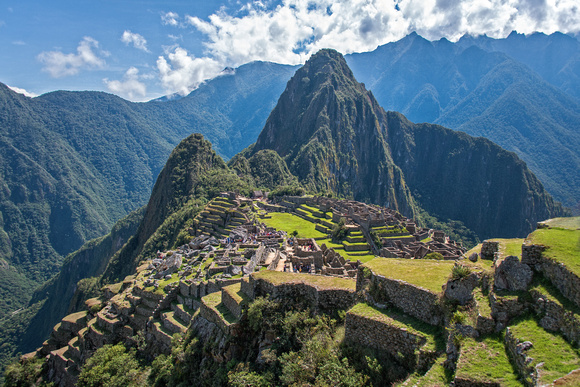Planning a Trip to Machu PicchuMachu Picchu. It was on my travel bucket list. I knew the trip would be like no other. It didn't take long to realize that the planning would be as well! The ancient and majestic site of Machu Picchu is located in Peru, a South American country full of mountains, valleys and changing altitudes. Yes, there is a small town at the base of Machu Picchu’s mountain, but there are no roads that lead to that town. How would we get there? A trip like this would involve more planning than usual.
First, Machu Picchu is a UNESCO World Heritage site and one of the “New Seven Modern Wonders of the World”. If you're not familiar with the site, read my last post for a brief overview (click). As a result, tourism is growing. To protect the site, an increasing number of restrictions are being placed on tourists. I realized I’d have to plan early. Second, the high altitude can cause problems for visitors, regardless of age or physical ability. A well-planned itinerary can minimize altitude sickness. I decided to contact a travel agent who specializes in South American travel to help me plan this vacation.
International visitors typically fly into the country through the coastal city of Lima. To reach Machu Picchu, visitors then have one of two options. They can hike to the ruins or take a train from the Sacred Valley.
The most common hiking itineraries take 2-6 days along the Incan Trail, although longer options can be arranged. Altitudes can reach up to 16,000 feet with the longer itineraries. A permit and one or more licensed porters are required, as the government places restrictions on the number of hikers allowed on the trail each day. Advanced planning is advisable. It occurred to me that hiking might allow for a more gradual adjustment to the altitude. Although I enjoy a good day hike, I admit I’m not a camper. My time in Peru was also limited. I didn’t want to spend so much time hiking, when I could be visiting other amazing Peruvian sites. So, we chose the train option. What exactly does that entail? Again, we began at sea level in Lima (25 feet in altitude). Machu Picchu is 8,000 feet above sea level, a height at which altitude sickness becomes a risk. Because there are no roads leading to the site, visitors typically fly from Lima to the city of Cusco at 11,000 feet in altitude, then immediately descend to the Sacred Valley at 9,000 feet, to spend some time acclimating. Yes, you read that correctly. Machu Picchu is at a lower altitude than either of these places, but Machu Picchu involves a significant amount of climbing and hiking over a fair amount of uneven and rocky terrain. The Sacred Valley, at least, allows for some relaxation and less strenuous activity, and allows visitors time to acclimate.
We followed our travel agent’s advice. We flew from Lima to Cusco. I can attest to feeling the high altitude the second we stepped off the plane. I can’t describe the feeling of suddenly having less oxygen available. I wasn’t sick. I simply felt odd. Fortunately, a driver and guide awaited us. We immediately began the descent into the Sacred Valley. The drive to our hotel turned out to be a spectacular experience, with views of the Andes Mountains much of the way. We stopped for photos and saw our first alpaca!
I vividly recall thinking, this is how the duel meaning of the word “breathtaking” was derived. It would not be the last time I had that thought!
We finally arrived at our hotel in the Sacred Valley, and were advised to eat lightly, rest and acclimate that afternoon. It was not a difficult thing to do. We were thrilled to relax in our beautiful surroundings! Our hotel even had a “light” lunch menu to help visitors avoid altitude sickness. It was also the perfect base to visit other magnificent sites in the Sacred Valley the next day. My family members had no trouble with altitude sickness at this point. I did experience a bit of nausea at dinner time, but felt fine by the morning.
After two nights in the Sacred Valley, we were ready to take on Machu Picchu. As mentioned previously, entry is restricted in order to protect the site. As of our trip (May 2019), tickets allowed for entry in one of two time slots, four hours in the morning or four hours in the afternoon. We learned that a maximum of 2,500 visitors is allowed during each time slot. I also learned that plans are underway to reduce visits to three 3-hour time slots next year. Visitors may bring in water. None is available for purchase past the entry gate. There are also no rest rooms past the entry gate. If one leaves the grounds to use a rest room, he or she is not permitted back on the grounds that day. Keeping in mind the extensive hiking and climbing on uneven rocks and terrain, water bottle and rest room planning are essential!
Our travel agent wisely planned two entries for us into this spectacular site. She also arranged for Vistadome train tickets for travel to and from Aguas Calientes, the city at the base of the mountain.
The Vistadome, a train with windows on all sides and in the ceiling, allows travelers to make the most of the scenic journey. We left Urubamba in the Sacred Valley in the morning and arrived in Aguas Calientes a couple of hours later, just in time for our afternoon entry into Machu Picchu with a guided tour. It was perfect planning!
We still had to make our way up the side of the mountain. To reach Machu Picchu’s entry gate from Aguas Calientes, visitors have two options. The first is an approximate 30-minute shuttle bus to the entry gate over a switch back road. (The road takes some extreme zig zag turns up the mountain.) The second is a trail of steep stairs that takes approximately 1 to 1-1/2 hours to climb. Our agent arranged the shuttle bus for us. For some reason, I didn’t recall that particular choice when planning the trip, but was happy to have the shuttle bus option when I saw the stairs. It reserved our energy for the Machu Picchu terrain. It also began raining as we were leaving the grounds. The rocky stairs would have been slippery to descend at the end of the day!
We were fortunate that most of our afternoon was dry. Our guide gave us the history of the ancient city and explained the architecture, engineering and theories behind the construction of the site.
He also provided suggestions for our return visit the next morning, when we would be on our own. It was an incredible afternoon!
We spent the evening at a hotel at the base of the mountain and we all agreed – it was the best hotel that we experienced on our trip! They treated us like royalty! We also knew the lay of the town, thanks to our guide.
We were ready for our free time without a guide the next morning. On our return to Machu Picchu, we decided to hike a trail to the Sun Gate, once the primary entrance to the city. The trail allows for spectacular views of the city ruins, as well as the mountains, valleys and terraces surrounding the city. It was a fantastic morning!
When finished, we took the bus back down the mountain, where we enjoyed lunch and some additional time exploring the quaint town of Aguas Calientes.
We boarded our train to our next destination late in the afternoon. We were ready for higher elevations and Cusco!
Many asked on our return how we dealt with the higher elevations. Altitude sickness can strike anyone, regardless of age or level of physical fitness. Effects were minimal but very tolerable for our group. We all felt that the minimal effects that we experienced were well worth the trip!
What exactly did we experience? I mentioned a bit of nausea at my first dinner. Two of us experienced a slight cough. I found myself having to stop to catch my breath much more quickly on stairs and on ascending paths, but it only took a few seconds to catch my breath and continue on. I awoke with relatively severe headaches every morning, a symptom of dehydration. Fortunately, I found that a good breakfast with plenty of liquids completely eliminated my headache pain for the day – and all five of our hotels included wonderful buffet breakfasts in our plans! I was able to quickly recover from the headaches. Then, on the last day of our trip, when we reached our highest elevation at 13,500 feet, both of my adult sons experienced nose bleeds. Fortunately, both knew how to deal with nose bleeds and had come prepared. They had no difficulty getting them under control and enjoyed that last day!
As for remedies, Peruvians are known to chew on coca leaves to deal with altitude sickness and many hotels offer guests warm coca tea. One son and I tried the coca tea, but we couldn’t determine if it helped. When I was dealing with nausea, a hotel worker suggested muña
Note that I focused on Machu Picchu planning in this post, as it is the most common travel destination on a trip to Peru. Visitors typically plan their other Peruvian destinations around Machu Picchu. Be assured, there are plenty of sites to see! The challenge is that many of these sites are at varying altitudes, requiring travel over mountains, through valleys, through cities and on lakes. We traveled by plane, train, tour bus and boat to arrive at all of the sites we visited on our ten-day journey. We also stayed at five different hotels! I will post more about the other sites that we visited soon. Follow Anne Warfield Photography on Facebook for updates. Or, click on my Peru photo galleries, for a preview.
Keywords:
7,
ancient,
archaeology,
historic,
history,
inca,
incan,
incas,
landscapes,
Machu Picchu,
modern wonders,
peru,
photography,
photos,
ruins,
scenic,
seven,
south america,
travel,
UNESCO,
vacation
|



